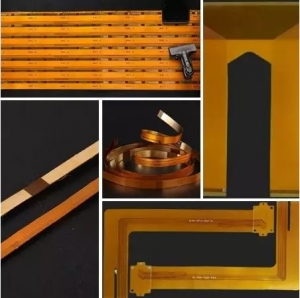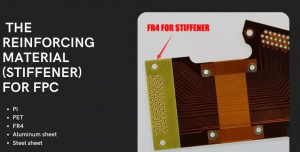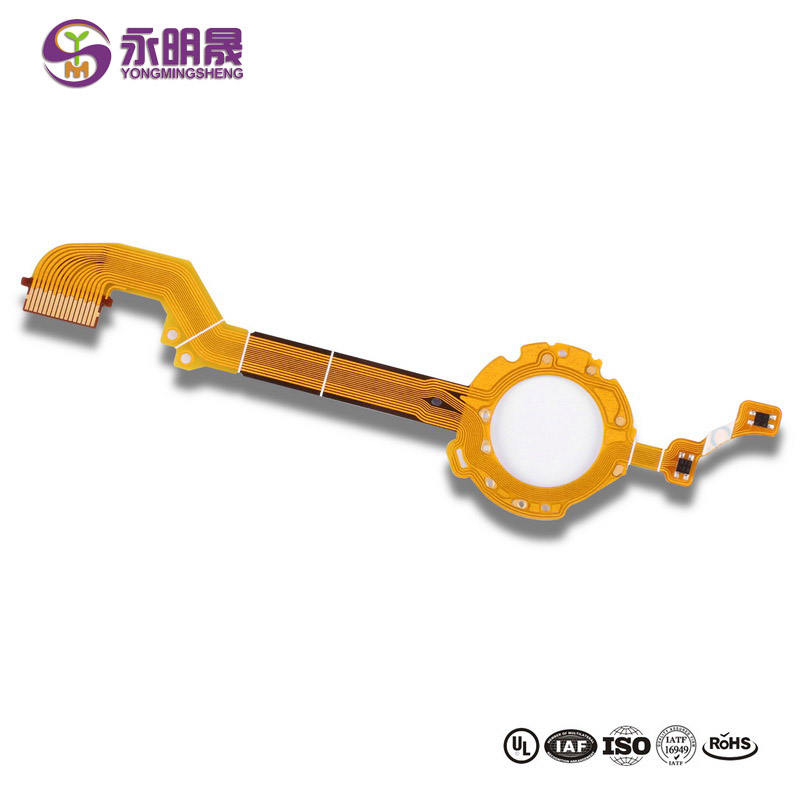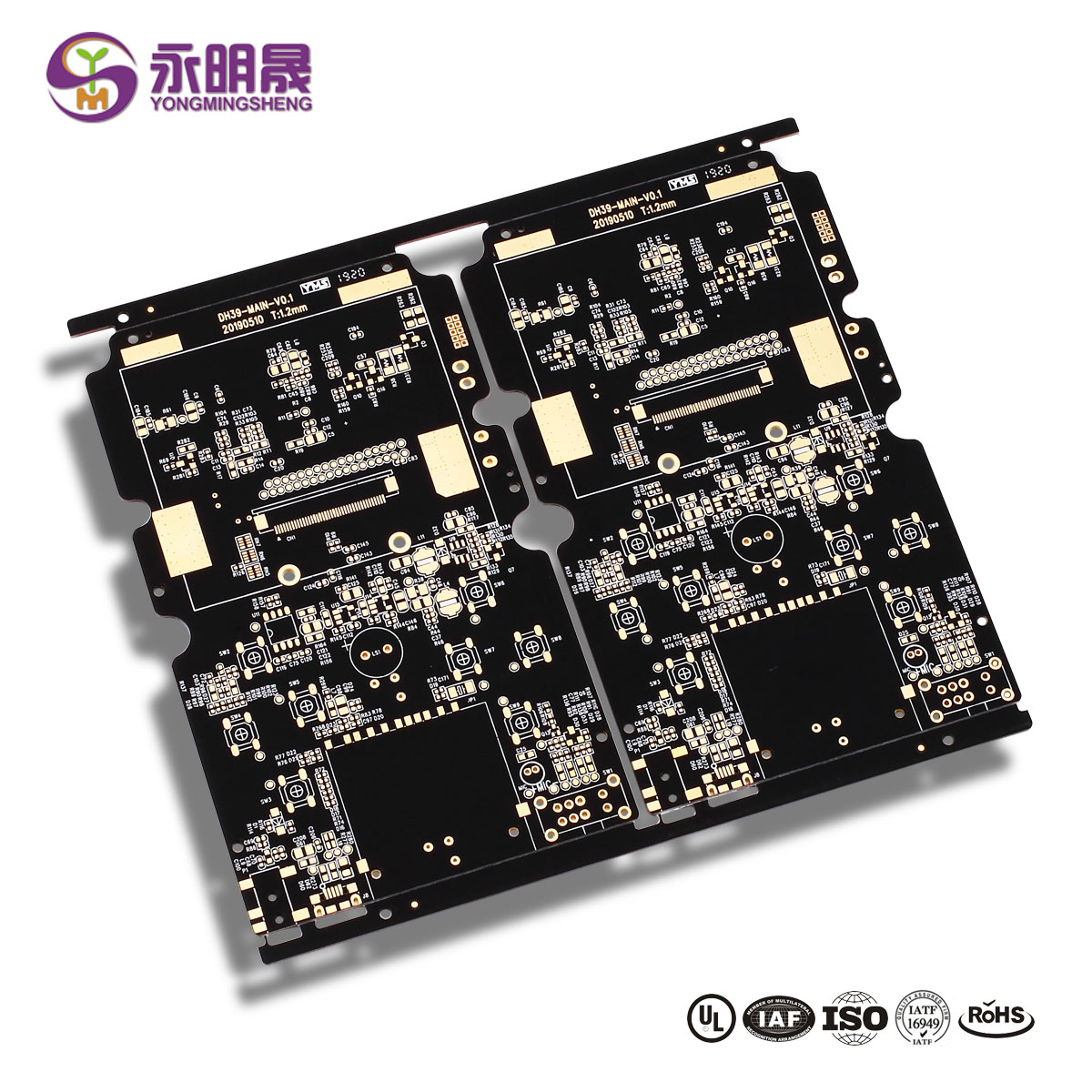A flexible printed circuit board features a combination of several printed circuits as well as components that are positioned on a flexible substrate. These circuit boards are also known as flex circuit boards, flex PCBs, flex circuits, or flexible printed circuits. These printed circuit boards are designed using the same components as rigid printed circuit boards. However, the only difference is the board is made such that it flexes to a desired shape during the application.
Types of Flex Circuit Boards
Flexible printed circuit boards can be designed in a wide range of configurations and specifications. However, they are classified on the basis of layers as well as configurations.

Flexible Circuit Boards Classification Based on Configurations
Flexible circuit boards are categorized into these types on the basis of their configuration
· Rigid-Flex PCBs: As the name suggests, these PCBs are a hybrid of flex and rigid PCBs, and they combine the best of both configurations. Typically, a rigid-flex PCB configuration features a series of rigid circuits that are held together using flex circuits. These hybrid circuits are in demand because they allow designers to improve the capability of their circuits. In these circuits, the rigid areas are mainly used for mounting connectors, chassis, and several other components. However, the flexible areas assure vibration-free resistance, and are flexible. Thus, various advantages offered by these circuit boards are being exploited by PCB designers to produce creative circuit boards for challenging applications.
· HDI Flexible PCBs: HDI is an abbreviation for high density interconnect. These PCBs are perfect for applications that demand higher performance than regular flexible PCBs. HDI flex circuit boards are designed incorporating several features such as micro-vias and they offer better layout, construction, as well as designs. HDI flexible PCBs utilize much thinner substrates than regular flexible PCBs, which helps reduce their package sizes as well as improves their electrical performance.
Flexible Circuit Boards Classification Based on Layers
The flex circuit boards are categorized into the following types on the basis of their layers.
· Single-Sided Flexible Circuit Boards: This is one of the basic types of flexible circuit boards comprising a single layer of flexible polyimide film with a thin layer of copper. The conductive copper layer is accessible from only one side of the circuit.
· Single-Sided Flexible Circuit Boards with Dual Access: As the name indicates, these flex circuits are single sided, however, the copper sheet or the conductor material is accessible from both sides.
· Double-Sided Flexible Circuit Boards: These circuit boards feature two layers of conductors on each side of the base polyimide layer. The electrical connections between two conductive layers are made using metalized plated through holes.
· Multi-Layered Flexible Circuits: A multi-layered flex circuit board is a combination of several double-sided and single-sided flexible circuits. These circuits are interconnected through plated-through holes or surface mounted in a cohesive pattern.
Benefits of Flexible Printed Circuit Boards
Over the years, flexible printed circuit boards have gained immense popularity owing to the benefits they offer. Here are a few benefits listed:
· Lightweight and Package Size Reduction: Flexible circuit boards can fit into applications where no other solutions may work. The circuit boards are thin, lightweight, and can be easily creased, folded, as well as positioned in the areas, where other components cannot fit in. At Rigiflex, our engineers often utilize the benefits of 3D packaging geometry to ensure further package size reduction.
· Accurate Designs: Flexible printed circuit boards are often designed and assembled using automated machinery. This helps reduce the errors that were involved in hand-built wires and harnesses, and ensures accuracy, which is a key requirement for advanced electronic devices.
· Freedom of Design: The design of flexible circuit boards is not limited to just two layers. This offers lots of design freedom to designers. The flexible PCBs can be easily made as single sided with a single access, single sided with double access, and multilayered – combining several layers of rigid and flexible circuits. This flexibility makes it a perfect choice for complex configurations with several interconnections. The flexible circuit boards can be designed to accommodate both – plated through-hole and surface mounted components.
· High Density Configurations Possible: The flexible printed circuit boards can feature a mix of both -plated through-hole and surface mounted components. This combination helps accommodate high density devices with minute narrow separation in between. Thus, denser and lighter conductors can be designed, and space can be freed for additional components.
· Flexibility: Flexible circuits can connect with multiple planes during the execution. This helps reduce the weight and space issues faced by rigid circuit boards. Flexible circuit boards can be easily flexed to different levels during the installation without the fear of failure.
· High Heat Dissipation: Owing to the compact designs and denser device populations, shorter thermal paths are created. This helps dissipate the heat faster than a rigid circuit. Also, flexible circuits dissipate heat from both sides.
· Improved Air Flow: Streamlined design of flexible circuits enable better thermal dissipation and improves the air flow. This helps keep the circuits cooler than their rigid printed circuit board counterparts. The improved airflow also contributes to the long term performance of electronic circuit boards.
· Durability and Long-term Performance: A flex circuit board is designed to flex up to 500 million times an average lifespan of an electronic device. Many of the PCBs can be bended up to 360 degrees. Low ductility and mass of these circuit boards help them withstand the impact of vibrations and shocks, thereby improving their performance in such applications.
· High System Reliability: Interconnections were one of the main concerns in the earlier circuit boards. Interconnection failure was one of the main reasons for circuit board failure. Nowadays, it is possible to design PCBs with lesser interconnection points. This has helped improve their reliability in challenging conditions. In addition to this, the utilization of polyimide material helps improve the thermal stability of these circuit boards.
· Streamlined Designs Made Possible: Flexible circuit board technologies have helped improve circuit geometries. The components can be easily surface mounted onto the boards, thus simplifying the overall design.
· Suited for High Temperature Applications: Materials such as polyimide can easily withstand high temperatures, as well as offer resistance against materials such as acids, oils, and gases. Thus, the flexible circuit boards can be exposed to temperatures up to 400 degrees Centigrade, and can withstand harsh working environments.
· Supports Different Components and Connectors: Flex circuits can support a wide range of connectors and components, including crimped contacts, ZIF connectors, direct soldering, and more.
· Cost Savings: Flexible and thin polyimide films can be easily fit into a smaller area, so they help reduce the overall assembly costs. Flexible circuit boards also help reduce testing time, wire routing errors, rejects, and reworking time.
Materials Used for Making Flexible Printed Circuit Boards
Copper is the most common conductor material used for making flexible PCBs. Their thickness may range from .0007ʺ to 0.0028ʺ. At Rigiflex, we can also create boards with conductors such as aluminum, Electrodeposited (ED) copper, Rolled Annealed (RA) copper, Constantan, Inconel, silver ink, and more.

Applications of Flex Circuit Boards
Flexible circuits have a variety of applications in different fields. There are hardly any modern-day electronics and commination areas where you won’t find the use of flex PCB or the updated long Flexible PCBs.
The flexible circuits have been developed to provide reliability, cost-saving, and long-lasting performances in the installed components. So, these days most electronics manufacturers opt for the PCB flexible circuits to offer sustainability to their products.
These are used widely in LCD televisions, cell phones, antennas, laptops, and what not! These communication devices have seen leaps development with the emergence of flex PCBs. However, the uses of the flex circuits are not limited here only.
You will also see it in hearing aids, advanced satellites, printers, cameras, and even in the calculators. Thus, you can ardently observe the use of the fantastic piece of circuit literally in every field in the modern era.
conclusion
This is all about what is flexible PCB and its applications and types. We hope you now have an in-depth idea about the incredible circuit. You can use it literally for any applications in any field, and that what makes it stand out among all PCB types.
Since the modern electronics and communication world is highly dependent on it, YMS PCB focuses on manufacturing and supplying the highest quality and cost-effective, flexible PCBs to the manufacturers.
Learn more about YMS products
People also ask
Post time: May-18-2022




